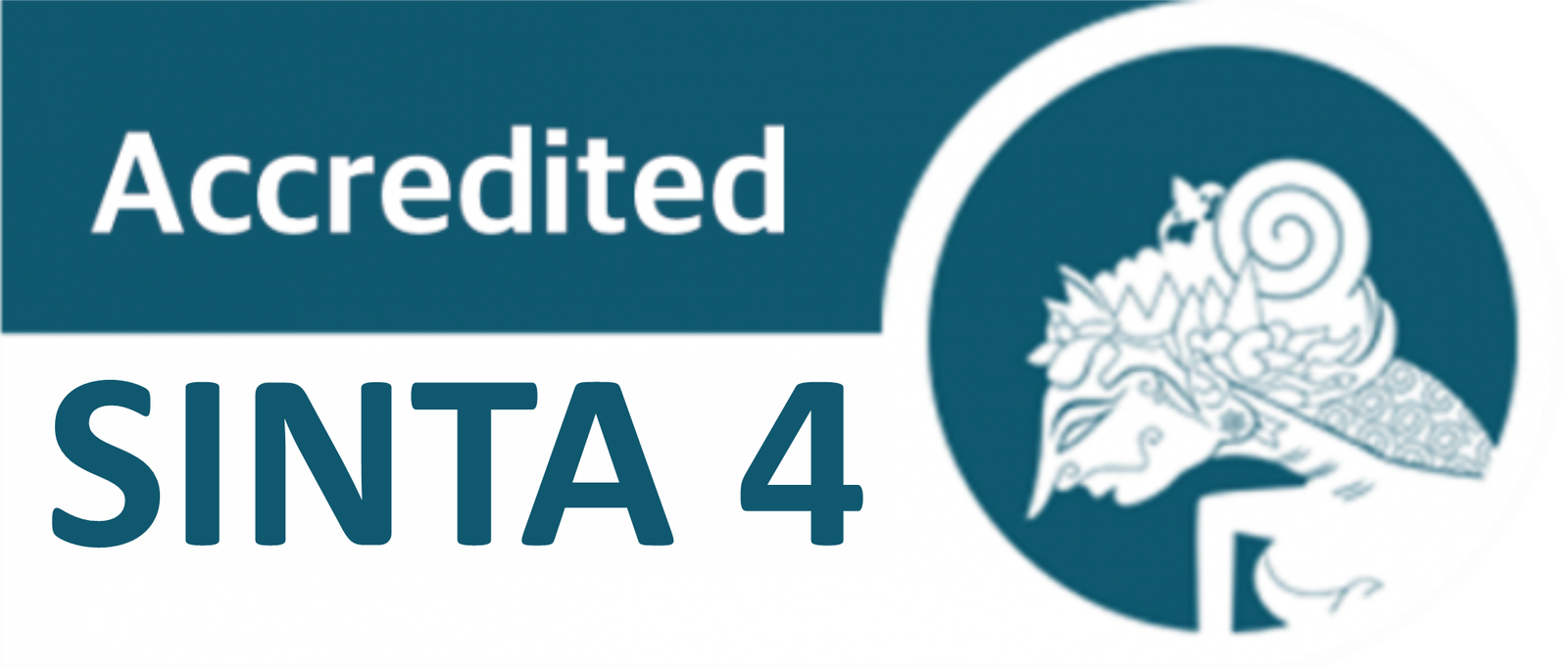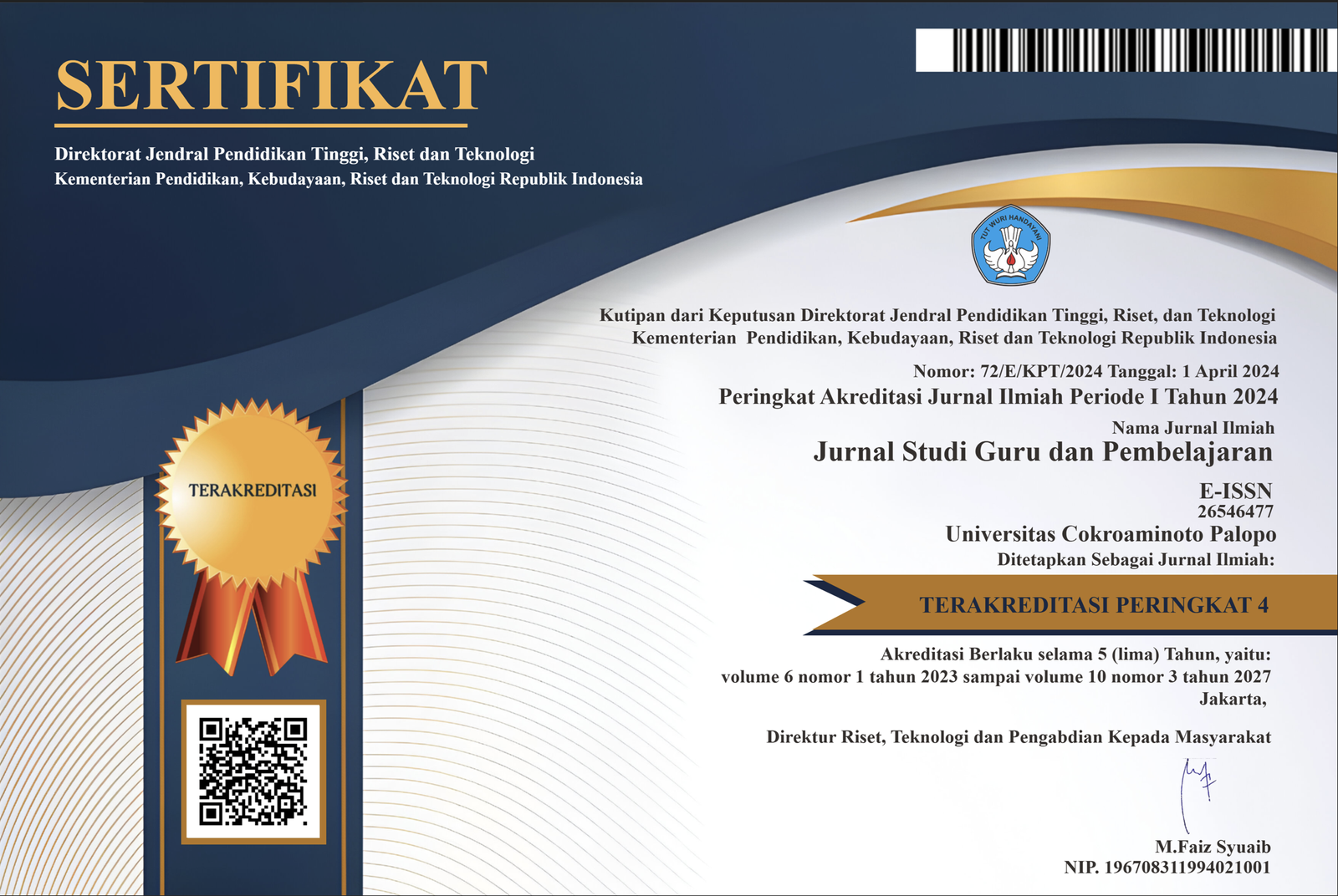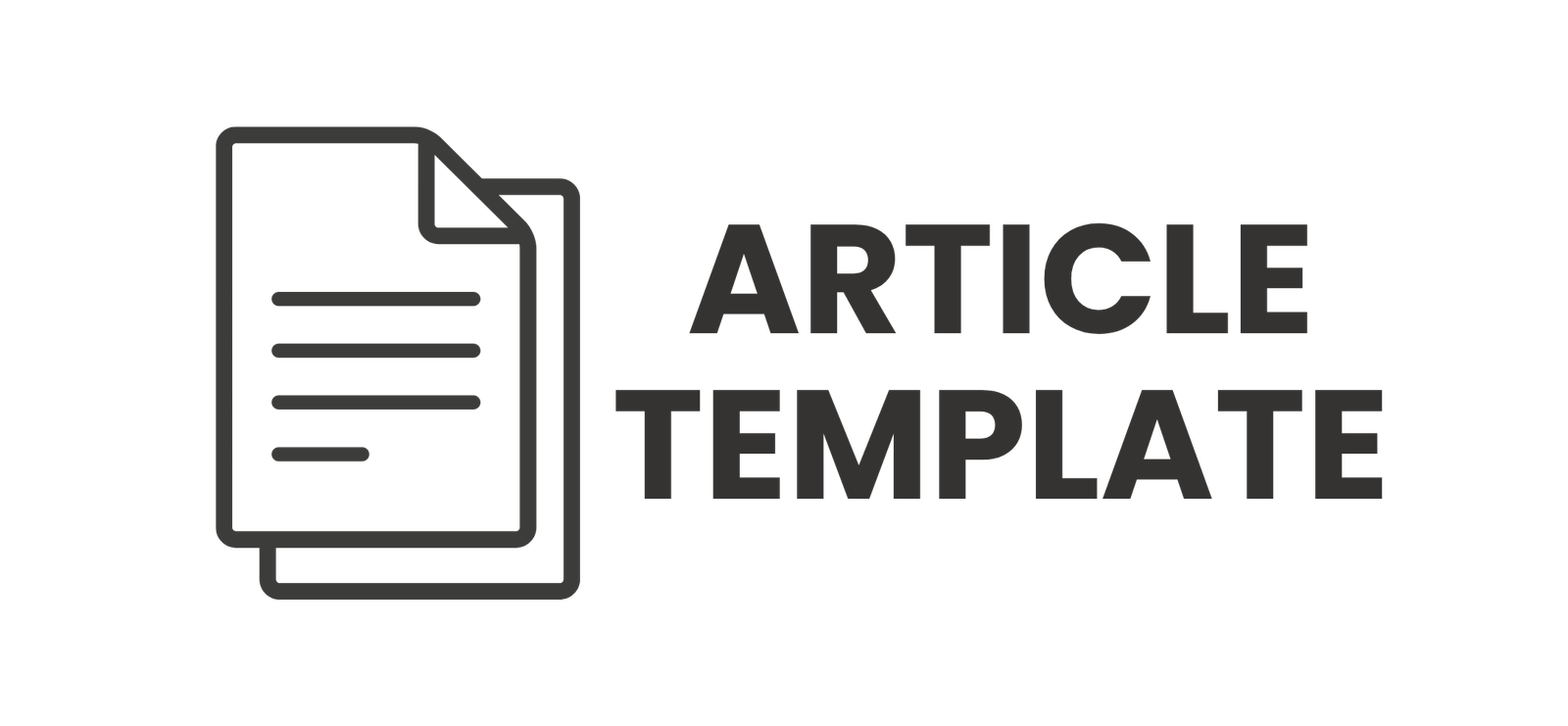Pengaruh Model Pembelajaran Kooperatif Tipe Think Pair Share Berbasis Media Digital terhadap Kemampuan Berpikir Kritis Siswa pada Pembelajaran Ekonomi di SMA Negeri 8 Semarang
DOI:
https://doi.org/10.30605/jsgp.8.3.2025.6853Keywords:
Model Pembelajaran Kooperatif, Think Pair Share, Media Digital, Kemampuan Berpikir Kritis, Pembelajaran EkonomiAbstract
Kemampuan berpikir kritis merupakan keterampilan penting abad ke-21 yang masih rendah pada pembelajaran Ekonomi di SMA Negeri 8 Semarang, sebagaimana ditunjukkan oleh hasil pra-penelitian dengan rata-rata nilai pretest hanya 52,3 dan tingkat ketuntasan 38%. Penelitian ini bertujuan untuk menganalisis pengaruh penerapan Model Pembelajaran Kooperatif Tipe Think Pair Share (TPS) berbasis media digital terhadap kemampuan berpikir kritis siswa pada mata pelajaran Ekonomi. Penelitian ini menggunakan pendekatan kuantitatif dengan metode eksperimen semu (quasi experiment) dan desain nonequivalent control group. Sampel penelitian terdiri atas 72 siswa kelas X IPS, dengan kelas X IPS 8 sebagai kelompok eksperimen (n = 36) yang mendapatkan pembelajaran TPS terintegrasi Google Docs dan Mentimeter, serta kelas X IPS 9 sebagai kelompok kontrol (n = 36) yang belajar dengan metode konvensional. Instrumen yang digunakan berupa tes uraian berpikir kritis berbasis indikator HOTS (C4–C6). Data dianalisis menggunakan uji normalitas, homogenitas, paired sample t-test, dan independent sample t-test. Hasil penelitian menunjukkan adanya peningkatan signifikan pada kemampuan berpikir kritis di kelas eksperimen, dengan rata-rata skor meningkat dari 45 (pretest) menjadi 80 (posttest), sedangkan kelas kontrol hanya meningkat dari 49 menjadi 56. Uji independent sample t-test menunjukkan perbedaan signifikan antara kedua kelompok (p < 0,05) dengan effect size besar, yang menandakan bahwa penerapan TPS berbasis media digital efektif dalam meningkatkan kemampuan berpikir kritis siswa. Penelitian ini menegaskan bahwa integrasi TPS dengan media digital mampu menciptakan pembelajaran yang lebih aktif, kolaboratif, dan interaktif, sekaligus mendukung pengembangan keterampilan abad ke-21. Implikasi praktisnya, guru dapat memanfaatkan media digital sebagai sarana kolaborasi dan interaksi dalam diskusi kelas. Penelitian lanjutan disarankan untuk melibatkan sampel lebih luas, durasi perlakuan lebih panjang, dan mengeksplorasi variabel tambahan seperti motivasi belajar, kreativitas, atau keterampilan kolaboratif siswa.
Downloads
References
Anderson, L. W., & Krathwohl, D. R. (2001). A taxonomy for learning, teaching, and assessing: A revision of Bloom's taxonomy of educational objectives. New York: Longman.
Anshori, M. (2024). Penerapan Model Pembelajaran Kooperatif Tipe Think Pair Share untuk meningkatkan keterampilan berpikir kritis siswa pada pembelajaran Ekonomi. Jurnal Pendidikan Ekonomi, 13(1), 55–66. https://doi.org/10.21009/jpe.13.1.55
Chairunnisak, C. (2020). Implementasi kurikulum merdeka berbasis teknologi digital. Jurnal Pendidikan Indonesia, 9(3), 233–245. https://doi.org/10.23887/jpi.v9i3.27700
Ennis, R. H. (2011). The nature of critical thinking: An outline of critical thinking dispositions and abilities. University of Illinois.
Facione, P. A. (2015). Critical thinking: What it is and why it counts. Insight Assessment.
Fanti, A., & Rombe, M. (2022). Efektivitas video animasi berbasis TPS terhadap hasil belajar kognitif siswa. Jurnal Ilmu Pendidikan, 19(2), 112–121. https://doi.org/10.24853/jip.19.2.112-121
Kenedi, A., Fatmawati, S., & Safitri, D. (2022). Penerapan Think Pair Share dalam pembelajaran Ekonomi untuk meningkatkan hasil belajar. Jurnal Pendidikan Ekonomi Indonesia, 5(1), 12–25. https://doi.org/10.23887/jpei.v5i1.32000
Kurniawan, R., Putra, Y., & Setiawan, A. (2024). Pengaruh gamifikasi digital dalam Model Pembelajaran Kooperatif Tipe Think Pair Share. Jurnal Teknologi Pendidikan, 10(2), 88–99. https://doi.org/10.21009/jtp.10.2.88
Latifah, N., & Luritawaty, I. (2020). Penerapan Model Pembelajaran Kooperatif Tipe Think Pair Share untuk meningkatkan keaktifan belajar siswa. Jurnal Penelitian Pendidikan, 20(1), 45–54. https://doi.org/10.17509/jpp.v20i1.23900
Putri, D., & Santosa, A. (2023). Integrasi Mentimeter dalam model pembelajaran kolaboratif. Jurnal Teknologi dan Pembelajaran, 8(2), 134–143. https://doi.org/10.21009/jtp.v8i2.19800
Rahmawati, F. (2023). Analisis motivasi belajar siswa dalam model pembelajaran kooperatif. Jurnal Ilmiah Pendidikan, 14(3), 199–209. https://doi.org/10.21009/jip.14.3.199
Riyan, D. (2021). Pemanfaatan Google Classroom untuk pembelajaran interaktif. Jurnal Teknologi Pendidikan, 7(2), 155–165. https://doi.org/10.21009/jtp.v7i2.17890
Salisa, A., & Iskandar, D. (2025). Meta-analisis literasi digital dan keterampilan berpikir kritis. Jurnal Studi Guru dan Pembelajaran, 8(1), 55–70. https://doi.org/10.30605/jsgp.8.1.2025.115
Sihombing, S. A. L. (2025). Pengaruh Model Pembelajaran Kooperatif Tipe Think Pair Share Terhadap Hasil Belajar Ekonomi Siswa Kelas XI IPS SMA N 1 Parbuluan.
Sugiyono. (2019). Metode penelitian kuantitatif, kualitatif, dan R&D. Bandung: Alfabeta.
Susilawati, E., Wahyuni, T., & Sari, L. (2020). Keterampilan berpikir kritis siswa dalam pembelajaran Ekonomi. Jurnal Inovasi Pendidikan Ekonomi, 10(1), 1–10. https://doi.org/10.21009/jipe.10.1.1
Teo, T. (2019). Students and teachers' intention to use technology: Assessing their measurement equivalence and structural invariance. Journal of Educational Computing Research, 57(1), 201-225. https://doi.org/10.1177/0735633117749430
Wahyuni, D., Prasetyo, B., & Nugroho, S. (2024). Pengembangan media berbasis augmented reality untuk meningkatkan berpikir kritis. Jurnal Teknologi Pendidikan Indonesia, 12(3), 210–222. https://doi.org/10.23887/jtpi.v12i3.67890
Wulandari, I., & Pramudita, R. (2021). Integrasi teknologi dalam pembelajaran berbasis kolaborasi. Jurnal Inovasi dan Teknologi Pembelajaran, 6(1), 75–85. https://doi.org/10.21009/jitp.6.1.75
Downloads
Published
How to Cite
Issue
Section
License
Copyright (c) 2025 Wahyu Wiwhid Handayani, Kemal Budi Mulyono

This work is licensed under a Creative Commons Attribution-ShareAlike 4.0 International License.
In submitting the manuscript to the journal, the authors certify that:
- They are authorized by their co-authors to enter into these arrangements.
- The work described has not been formally published before, except in the form of an abstract or as part of a published lecture, review, thesis, or overlay journal.
- That it is not under consideration for publication elsewhere,
- That its publication has been approved by all the author(s) and by the responsible authorities – tacitly or explicitly – of the institutes where the work has been carried out.
- They secure the right to reproduce any material that has already been published or copyrighted elsewhere.
- They agree to the following license and copyright agreement.
License and Copyright Agreement
Authors who publish with JSGP agree to the following terms:
- Authors retain copyright and grant the journal right of first publication with the work simultaneously licensed under Creative Commons Attribution License (CC BY-SA 4.0) that allows others to share the work with an acknowledgement of the work's authorship and initial publication in this journal.
- Authors are able to enter into separate, additional contractual arrangements for the non-exclusive distribution of the journal's published version of the work (e.g., post it to an institutional repository or publish it in a book), with an acknowledgement of its initial publication in this journal.
- Authors are permitted and encouraged to post their work online (e.g., in institutional repositories or on their website) prior to and during the submission process, as it can lead to productive exchanges, as well as earlier and greater citation of published work.













